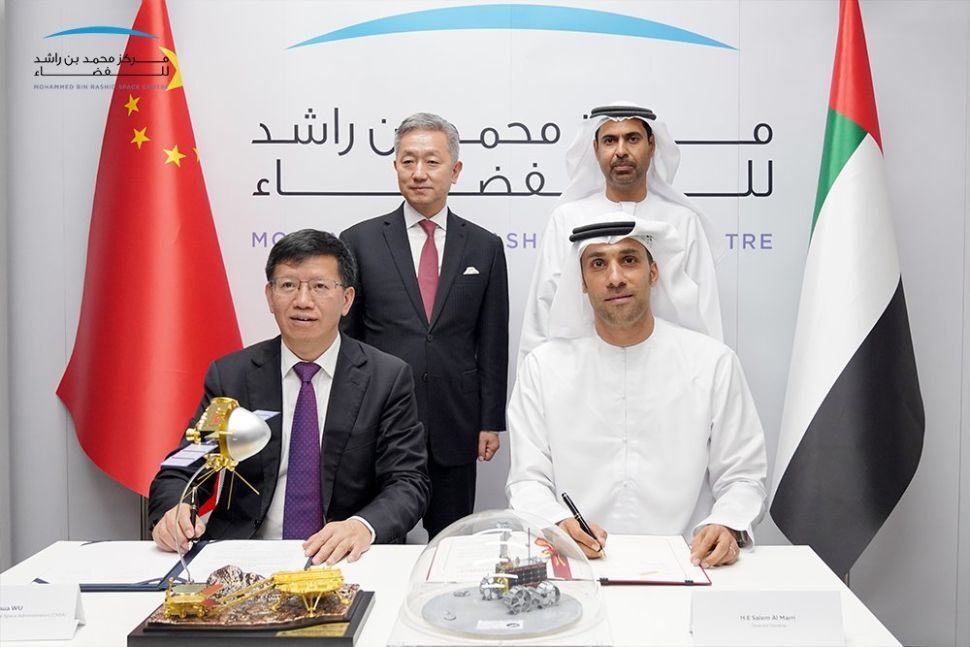The United Arab Emirates (UAE) has found another partner to help further its moon exploration ambitions.
The UAE's Mohammed Bin Rashid Space Centre (MBRSC) announced today (Sept. 16) that it has signed a memorandum of understanding with the China National Space Agency (CNSA) to work together on future lunar efforts.
The two agencies will "collaborate on future moon missions involving the landing of an MBRSC rover aboard a CNSA lander," the MBRSC said via Twitter today(opens in new tab). The agreement marks "the first joint space project between the UAE and China," the agency said in another tweet(opens in new tab).
The MBRSC is already working with two private-sector partners on its Emirates Lunar Mission, which is scheduled to send the small Rashid rover to the moon late this year. The robotic mission will launch atop a SpaceX Falcon 9 rocket, and the 22-pound (10 kilograms) Rashid will touch down aboard Hakuto-R, a lander built by the Tokyo company ispace.
Tapping China for future moon work as well makes a lot of sense, given the nation's impressive lunar exploration record. In the past decade, China has launched three lunar surface missions, all of them successful.
Chang'e 3 put a lander-rover duo down on the moon's near side in December 2013, and Chang'e 4 landed a similar pair on the far side in January 2019 — the first soft touchdown ever achieved on that little-understood part of the moon. Both missions are still going strong. And, in late 2020, the Chang'e 5 mission brought moon dirt and rocks to Earth, pulling off the first lunar sample-return effort since the mid-1970s.
The Emirates Lunar Mission and the newly announced agreement with China are part of a concerted push by the UAE to become more of a space player.
For example, the nation sent its first astronaut, Hazza Al Mansouri, to the International Space Station in the fall of 2019. Another UAE spaceflyer, Sultan AlNeyadi, will travel to the orbiting lab for a six-month stay next year as a member of SpaceX's Crew-6 mission for NASA.
In 2020, the UAE launched the Emirates Mars Mission, which sent an orbiter named Hope to the Red Planet. Hope arrived safely in February 2021 and continues studying the Martian atmosphere and climate from its orbital perch today. The nation is also now developing a mission to the asteroid belt, which it aims to launch in the late 2020s.
Quelle: SC


